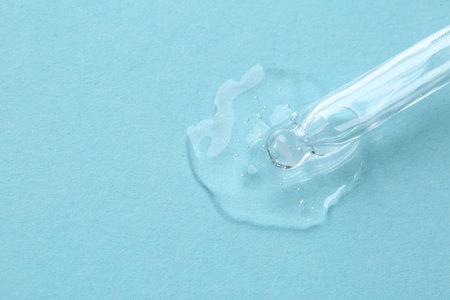1. Introduction to Saltwater and Freshwater Tanks
Keeping an aquarium is a rewarding hobby that brings a piece of nature into your home. Whether you choose a saltwater or freshwater tank, both have their own unique appeal and challenges. Understanding the differences between them can help you decide which type of aquarium best suits your lifestyle and experience level.
Popularity and General Appeal
Both saltwater and freshwater tanks are popular among aquarium enthusiasts, but they attract different types of hobbyists. Freshwater tanks are generally more common due to their lower cost and easier maintenance, making them ideal for beginners. On the other hand, saltwater tanks offer vibrant marine life and exotic fish species, appealing to those looking for a more visually stunning setup.
Comparison of Saltwater and Freshwater Tanks
| Feature | Saltwater Tanks | Freshwater Tanks |
|---|---|---|
| Difficulty Level | More challenging; requires precise water conditions | Easier to maintain; good for beginners |
| Cost | Higher initial and maintenance costs | More affordable setup and upkeep |
| Fish Variety | Diverse, colorful marine species | Wide range of hardy freshwater fish |
| Aesthetic Appeal | Breathtaking coral reefs and vibrant fish | Naturally beautiful with plants and decorations |
| Main Equipment Needed | Sump filter, protein skimmer, high-quality lighting | Simpler filters, basic lighting, air pumps (optional) |
Which One is Right for You?
If youre new to aquariums or want a low-maintenance setup, a freshwater tank might be the best choice. However, if youre willing to invest time and money into creating a stunning marine environment, a saltwater tank could be a great option. Understanding the key differences will help you make an informed decision as you start your aquarium journey.
2. Key Differences Between Saltwater and Freshwater Tanks
When deciding between a saltwater or freshwater aquarium, it’s important to understand the key differences in water chemistry, tank maintenance, equipment requirements, and fish species. Each type has its own unique challenges and benefits.
Water Chemistry
The biggest difference between saltwater and freshwater tanks is the water itself. Saltwater aquariums require a precise balance of salinity, while freshwater tanks rely on maintaining stable pH and hardness levels.
| Factor | Saltwater Tank | Freshwater Tank |
|---|---|---|
| Salinity | Requires careful monitoring and mixing of marine salt. | No salt required; uses regular tap or filtered water. |
| pH Levels | Typically ranges from 7.8 to 8.4, depending on the species. | Varies widely (6.0–8.0) depending on the fish species. |
| Water Hardness | Tends to be higher due to dissolved minerals in salt mixes. | Can be adjusted with conditioners based on fish needs. |
Tank Maintenance
Aquarium upkeep differs significantly between these two types. Saltwater tanks generally require more frequent monitoring and care compared to freshwater setups.
- Saltwater Tanks: Require regular water changes, protein skimmers, and precise salinity adjustments.
- Freshwater Tanks: Easier to maintain with routine water changes and basic filtration.
Equipment Requirements
The equipment needed for each type of tank can vary greatly in complexity and cost. Saltwater aquariums often require more specialized gear.
| Equipment | Saltwater Tank | Freshwater Tank |
|---|---|---|
| Filtration System | Sump filters, protein skimmers, and live rock for biological filtration. | Sponge filters, hang-on-back (HOB) filters, or canister filters. |
| Lighting | Special reef lighting for coral growth if keeping a reef tank. | Basic LED or fluorescent lighting for general fishkeeping. |
| Chemical Additives | Additives like calcium, magnesium, and trace elements for corals. | Mainly dechlorinators and occasional fertilizers for plants. |
| Pumps & Powerheads | Necessary for strong water flow in marine environments. | Lesser flow needed unless keeping certain species like discus. |
Fish Species Differences
The types of fish available for each aquarium type also differ significantly. Saltwater fish are often more colorful but can be more delicate, while freshwater fish tend to be hardier and easier to care for.
Saltwater Fish Examples:
- Clownfish: Popular beginner-friendly saltwater fish.
- Tangs: Active swimmers that need large tanks.
- Mandarinfish: Beautiful but requires a mature tank with plenty of live food.
- Lionfish: Stunning but venomous predator fish.
Freshwater Fish Examples:
- Bettas: Colorful and easy to care for in small tanks.
- Tetras: Small schooling fish that thrive in groups.
- Cichlids: Come in many varieties; some can be aggressive but fascinating to watch.
- Corydoras Catfish: Bottom dwellers that help keep the tank clean.
The choice between a saltwater or freshwater aquarium depends on your experience level, budget, and how much time you want to dedicate to maintenance. Both types offer rewarding experiences but come with different levels of complexity and commitment.

3. Pros and Cons of Saltwater and Freshwater Tanks
Choosing between a saltwater and freshwater tank depends on several factors, including cost, complexity, and the variety of marine life you want to keep. Both types have their own advantages and challenges. Lets break them down.
Cost Considerations
One of the biggest differences between saltwater and freshwater tanks is the cost. Generally, saltwater tanks are more expensive to set up and maintain due to specialized equipment, higher-priced fish, and the need for marine salt mixes.
| Factor | Saltwater Tank | Freshwater Tank |
|---|---|---|
| Initial Setup Cost | Higher (specialized equipment needed) | Lower (basic equipment suffices) |
| Maintenance Cost | Higher (salt mix, supplements, live rock) | Lower (fewer additives required) |
| Fish & Coral Prices | Tends to be expensive | Tends to be affordable |
Complexity and Maintenance
The complexity of maintaining a tank can also play a big role in your decision. Saltwater tanks require precise water parameters, while freshwater tanks are generally more forgiving.
- Saltwater Tanks: Require monitoring of salinity, pH levels, and other chemical balances. Regular water changes are essential to maintain stability.
- Freshwater Tanks: Easier to manage with fewer water chemistry concerns. Routine water changes and filtration maintenance are usually enough.
Biodiversity and Aesthetic Appeal
If youre looking for vibrant colors and exotic marine life, saltwater tanks offer unmatched biodiversity. However, freshwater tanks also provide beautiful aquascaping opportunities.
- Saltwater Tanks: Home to colorful fish like clownfish, tangs, and unique invertebrates such as shrimp and corals.
- Freshwater Tanks: Offer a wide variety of fish, including bettas, tetras, and cichlids. Live plants can create stunning underwater landscapes.
The Best Choice for You
If youre a beginner or want a low-maintenance setup, a freshwater tank may be the best option. If youre willing to invest time and money into creating a thriving marine ecosystem, then a saltwater tank could be worth the effort.
4. Choosing the Right Tank for You
Deciding between a saltwater or freshwater aquarium depends on several factors. Your experience level, budget, and the type of fish you want to keep all play a role in determining the best choice for you. Let’s break down these factors to help you make an informed decision.
Experience Level
If youre new to fishkeeping, a freshwater tank is generally the better option. Freshwater aquariums are easier to maintain and more forgiving of beginner mistakes. Saltwater tanks require more knowledge about water chemistry, filtration, and marine species care.
Budget Considerations
The cost of setting up and maintaining an aquarium varies significantly between saltwater and freshwater tanks. Here’s a quick comparison:
| Factor | Freshwater Tank | Saltwater Tank |
|---|---|---|
| Initial Setup Cost | Lower – basic equipment is affordable | Higher – requires specialized equipment |
| Maintenance Costs | Lower – fewer chemical additives needed | Higher – regular testing and supplements required |
| Fish & Coral Prices | More affordable options available | Marine fish and corals can be expensive |
| Equipment Needs | Simpler filtration and lighting systems | Advanced filtration, protein skimmers, and special lighting needed |
Desired Fish and Aquatic Life
The type of fish and other aquatic creatures you want to keep can influence your decision. Freshwater tanks offer a wide variety of hardy species such as guppies, tetras, and bettas. Saltwater tanks allow for stunning marine life like clownfish, tangs, and even live coral reefs.
Common Freshwater Fish:
- Guppies
- Tetras (Neon, Cardinal)
- Bettas
- Cichlids
- Angelfish
Common Saltwater Fish:
- Clownfish
- Tangs (Blue Tang, Yellow Tang)
- Moorish Idol
- Pufferfish
- Lionfish (for experienced keepers)
Your Commitment Level
Saltwater tanks require more time for maintenance, including frequent water testing, cleaning, and ensuring proper salinity levels. If you prefer a lower-maintenance option or have a busy schedule, a freshwater tank might be a better fit.
Making Your Decision
If youre just starting out or want a low-maintenance setup with affordable options, go with freshwater. If youre willing to invest time and money into learning about marine ecosystems and caring for delicate marine species, a saltwater tank can be a rewarding choice.
No matter which type of aquarium you choose, research your specific setup requirements and enjoy the journey of creating a thriving aquatic environment!
5. Tips for Setting Up and Maintaining Your Aquarium
Setting up and maintaining an aquarium can be a rewarding experience, but it requires careful planning and regular upkeep. Whether youre choosing a freshwater or saltwater tank, following best practices will help ensure a thriving aquatic environment. Here are some essential tips for setting up, cycling, and maintaining your aquarium while avoiding common mistakes.
Setting Up Your Aquarium
Choosing the Right Tank Size
The size of your tank plays a crucial role in maintaining stable water conditions. Larger tanks are generally easier to manage because they dilute waste more effectively and provide a more stable environment for fish.
| Tank Type | Recommended Minimum Size | Why It Matters |
|---|---|---|
| Freshwater | 20 gallons | Easier to maintain water parameters; accommodates more fish. |
| Saltwater | 30 gallons | Larger volume helps stabilize salinity and other parameters. |
Selecting the Right Equipment
Your aquarium setup should include essential equipment like a filter, heater (if needed), lighting, and a substrate that suits your chosen aquatic life.
Cycling Your Aquarium
Cycling is the process of establishing beneficial bacteria that break down waste products. Skipping this step can lead to toxic ammonia spikes, harming your fish.
The Nitrogen Cycle Explained
- Aquarium Cycling: Beneficial bacteria convert ammonia into nitrite, then into nitrate.
- Nitrate Management: Regular water changes keep nitrate levels safe.
- Cycling Time: The process typically takes 4-6 weeks before adding fish.
Avoiding Common Mistakes
Mistakes in setup and maintenance can lead to unhealthy conditions for your fish. Here are some common pitfalls to avoid:
- Overstocking: Adding too many fish at once can overwhelm the filtration system.
- Poor Water Quality: Infrequent water changes lead to toxin buildup.
- Mismatched Species: Some fish require different water conditions than others.
- Ineffective Filtration: Using an undersized filter can result in poor water circulation and quality issues.
Maintaining a Healthy Tank
A well-maintained tank promotes healthy fish and reduces the risk of disease. Follow these best practices:
Regular Water Changes
Aim to replace 10-20% of the water every one to two weeks to remove waste and replenish essential minerals.
Monitoring Water Parameters
Use a test kit to check ammonia, nitrite, nitrate, pH, and salinity (for saltwater tanks) regularly. Keeping these within safe ranges ensures a stable environment.
Caring for Fish and Plants
If you have live plants, provide appropriate lighting and fertilization. For fish, feed high-quality food in small amounts to prevent overfeeding.
A properly set up and maintained aquarium will provide years of enjoyment while keeping your aquatic pets healthy. By following these guidelines, you’ll create an environment where both freshwater and saltwater species can thrive.


